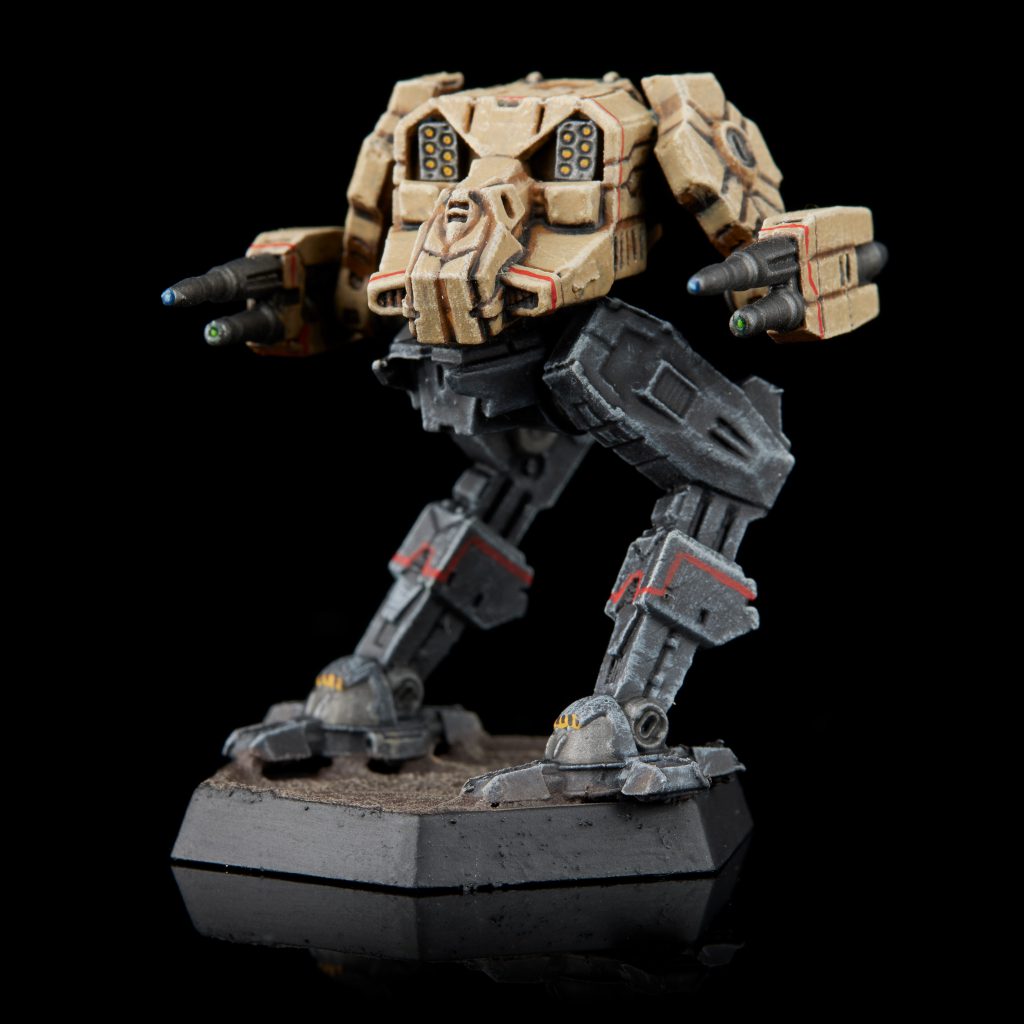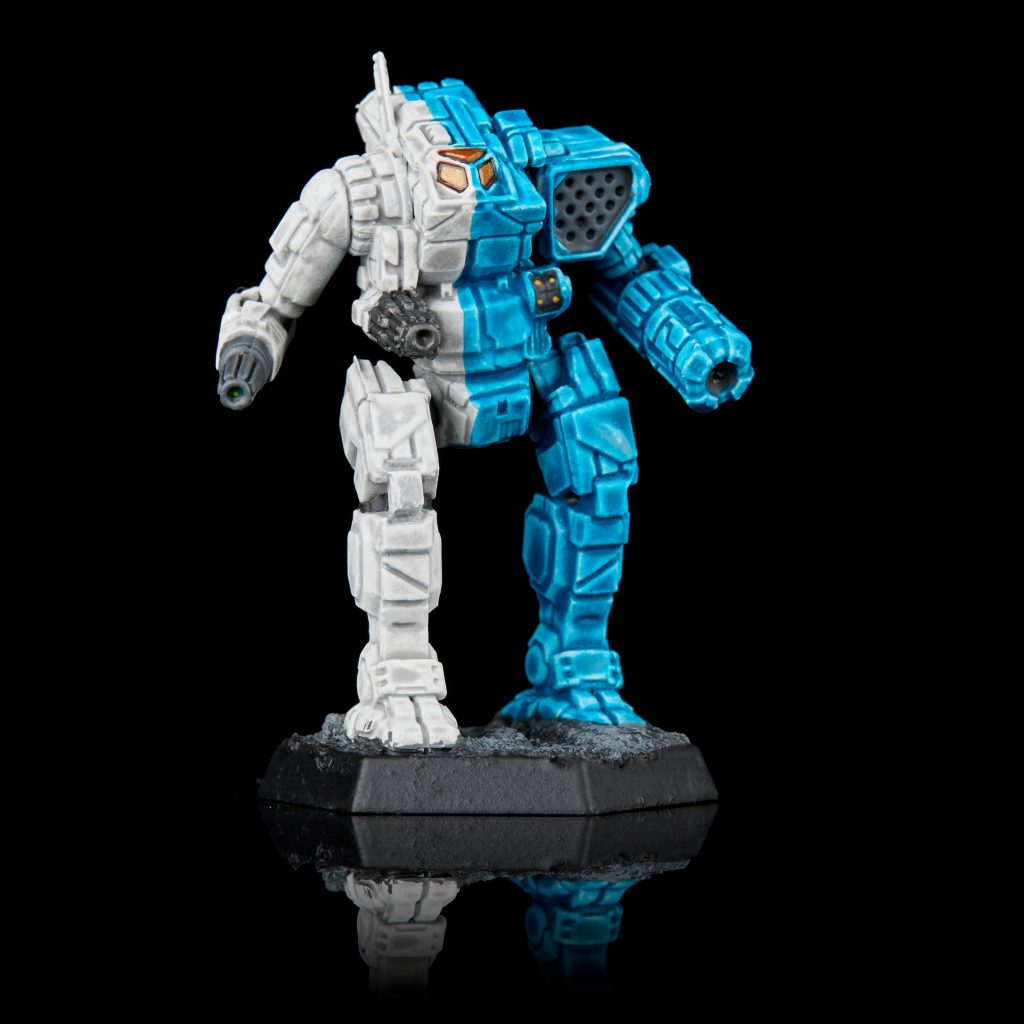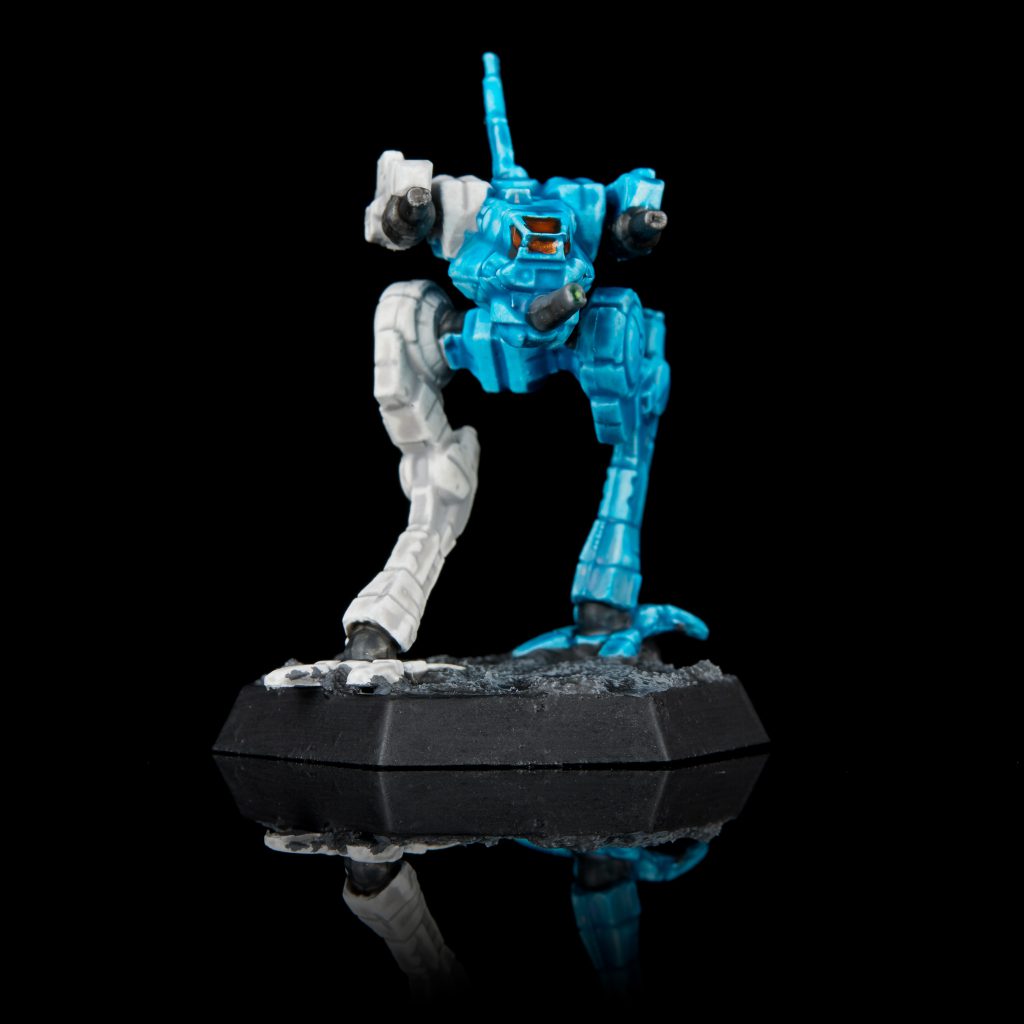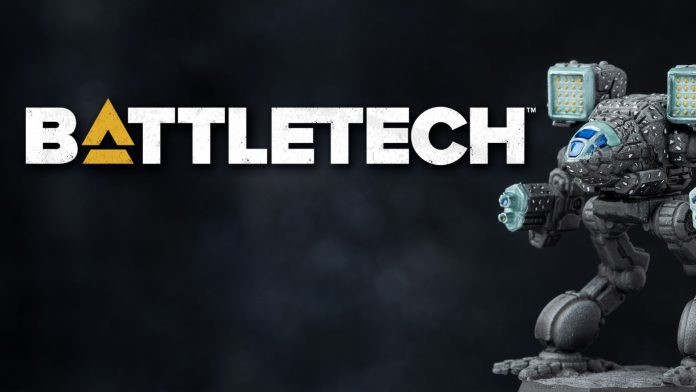The extent of force composition rules in Battletech are simple Battle Value (BV) balancing – both sides should end up with approximately the same total. The simplicity of these rules commonly causes a divide between people who prefer to spend that BV budget on more mechs or spend it on better mechs. As with nearly everything in Battletech, there’s very little consensus on which is better.
I have been playing a hell of a lot of Battletech lately, and I have specifically been playing a lot of IS versus Clan games. The IS vs Clan matchup is common, as different players will gravitate towards one or the other depending on the specific gameplay fantasy they enjoy, and most groups will have people who play both. Playing against enemies of a different tech level is a very different experience to playing against enemies with the same tech level. Higher tech mechs hit harder and move faster for the same weight, and they are priced accordingly. I generally use the term Clan to describe the high tech side, and IS (Inner Sphere) to describe the low tech side, but depending on the specifics the high tech side could be Word of Blake, or Comstar, or the SLDF, or even the Inner Sphere later in the timeline, and the low tech side could be Pirates, Periphery Minors, Mercenaries, or anything else.
In addition, you can mix high tech and low tech units together in the same formations and end up with a mix of their strengths and weaknesses, there are no strict rules forcing you to commit to one or the other. For various reasons, I generally believe that you are better off committing fully to one side or the other rather than mixing tech levels super heavily. I’ll be writing this assuming you are using BV to balance pick up games, because if you are playing a campaign or a narrative type game without some form of balancing, High Tech will basically always have a lead on Low Tech. Before we get into that though, its important that we cover a few basic, fundamental tactics for this game.

Fundamental Tactics
One of the key fundamental tactics for forces of either tech level is to concentrate fire. It is always better to fire as many of your mechs as possible at a single mech at a time, rather than splitting shots around. Lets say for example that it takes 4 shots to kill a mech, and you are playing a 4v4. If you both shoot all of your mechs at their own target, you will both die on turn 4, but if you shoot all 4 of your mechs at one of his, but he shoots each of his mechs at a different target, the math changes a lot. On the first turn, you will have killed one of his mechs, removing its damage from the board for the rest of the game, while he has done 25% damage to each of yours. You then shoot another one next turn, and now he has only done 50% damage to 3 mechs out of 4, and next turn he will only have done 75% damage to 2 of yours, and on the fourth turn he will be out of mechs and you will only have lost a single mech. It obviously doesn’t work that simply in practice, but the principle is the same. If you concentrate fire on individual mechs rather than splitting it, you remove guns from the fight faster, which lowers your opponents ability to do damage to you, which lets you keep your guns in the fight for longer, which lets you remove more of his guns, ect ect ect. The difference between a force that does focus fire and a force that doesn’t is night and day.
The second fundamental tactic for Battletech is that standing still is death, and speed is armor. The faster you can move, the higher a TMM you can build up, and TMMs do a fantastic job of keeping your mechs alive for longer. Even a +1 TMM from walking 3 hexes is enough to shift the odds pretty heavily for you, and the accuracy bonus from standing still is very rarely worth the damage you take for it. Think about it this way, when you walk 3 hexes, you get a +1 to your to hit with all weapons, which is unfortunate, but every single enemy mech gets a +1 to hit you, which is awesome, because it means that only one of your units is getting that +1, but every single enemy is getting that +1 to hit you, meaning that one unit on your side is getting the penalty, but every enemy is getting the penalty right back. This is a good trade. If you stand still however, you get no to hit penalty, but neither does your enemy, which leads into the inverse of the above. You have slightly higher to-hit on a single unit, at the cost of every enemy on the table having an easier time hitting you, which is a bad trade for math. Always move as far as you can, but try to move 3, 5, or 7 hexes, as these are the break points where your penalty stays the same, but theirs gets bigger.
The third really important fundamental tactic is what I have started calling the “Party Zone” due to one of the guys I play with. The “Party Zone” is the space where the optimal ranges on your weapons intersect, or where the majority of your weapons are at their optimal range, and you can fire as many weapons as you need to kill the target with maximum accuracy and effect. Some mechs have very small Party Zones, like anything with IS LRMs, as they are only not taking a hit penalty at exactly 7 hexes away, while others have very large Party Zones, such as mechs with Clan ER large and ER medium lasers, which have a Party Zone from 1-5 hexes because all of their lasers will be at short range. Maintaining the perfect range to your opponent to make the most effective use of your weapon is a learned skill, and it takes some time to figure out, but once you have it is one of the single greatest skills you can learn. It feels like cheating as you get huge bonuses because all of your weapons are always able to take good shots, while the opponent isn’t. It is also one of the only things you have full control over, as movement is rarely random on normal terrain.
High Tech

High tech forces have an advantage when it comes to damage. Their weapons tend to do more damage, have longer range, and hit more often. Weapons like the Clan large pulse laser and Clan ERPPC deal great damage out to extreme ranges. In addition to their weapons doing more damage, they tend to be lighter, so more of them fit onto a single mech, meaning that each individual mech can concentrate a lot more firepower. They also have weight saving equipment in other parts of the mech, such as XL engines and Endo-Steel structures, which gives them even more extra tonnage that they can use to cram more guns into their mechs. High tech forces should basically always win a 1v1 fight, even if their low tech opponent is heavier than them. High tech assault mechs are ungodly demons festooned with guns that can walk into entire enemy formations and walk out the other side with some luck. High tech mechs also tend to be much faster than their low tech equivalents, which is a big deal, as the main thing you have total control over in BattleTech is movement, everything else is up to your dice.
Low Tech

On the other hand, low tech Mechs have 2 major advantages. Numbers and armor. Being lower tech, each of your mechs can carry fewer weapons, can fire them less often, and will be carrying much worse weapons in general than the high tech mechs. This means that you get mechs at a substantial discount, and can have many, many more of them in a game of the same BV. This leads in to the second strength, which is armor. Armor is very, very cheap in terms of BV compared to high end expensive weapons, and skimping on good guns means that you get a hell of a lot more armor on the field, as a greater percentage of your BV will be spent on it. In addition, the lack of XL engines and the increase in armor both combine to make low tech Mechs fantastically hard to kill compared to high tech ones of similar BV. A primitive, junky, crude Banshee 3MC is 1487 BV and has 240 points of armor, while a sleek, fast, high tech Viper is 1450 with only 134 points of armor. This tracks up to around 2000 BV per mech, where the absolute most expensive low tech mechs sit and some of the middling high tech ones are, and high tech durability starts to catch up. High tech mechs can get similar levels of armor, but it comes at a substantially higher price due to the more expensive equipment.
The Matchup
So, for playing this matchup, going at it from the high tech side you really need to leverage your range and speed advantages as hard as you can. You will be able to outrun the junk patrol and control the range of engagement, and due to your longer range, the further away you can be from your enemy, the better. Guns like C LPLs. ER PPCs and ER ATMs are great at super long standoff range, but slope off in relative power quite a lot as the enemy gets closer. Low tech weapons tend to be more efficient at knife fighting ranges than yours are, and your longer range brackets don’t matter for much if the enemy is 2 hexes away from you. If you are in a straight up fight, you should spend basically that entire fight running away backwards and maintaining a long range from your opponent while nibbling him to death with long range weapons. It will take longer and be slower than sprinting forwards and deathballing, but its the most consistent way to win. In addition, if you can, it really helps to stay in more open parts of the board. When you are standing on an open field, your range and speed leads matter the most, the more woods and hills that the low tech player has to hide in, the closer they are going to be able to get.
If you are playing an objective control type scenario, it is going to be a bit harder for you as you will have some trouble saturating objectives the way the enemy can, so your best bet is to focus all of your forces in one area and try to sweep from that objective to the others after killing everything on that objective. Generally high tech forces do better on the defensive in scenarios, as they can surge forwards with their faster mechs and bloody the enemy up before falling back and kiting.
Low tech on the other hand is slow, short ranged, and a blunt instrument. Low Tech requires you to move towards your enemy to mitigate his range advantage and get as close as possible. They may try to run away from you, but if you picked the right mechs you should have enough speed to at least keep up, if not actively catch them, and they will run out of table eventually. Your greater numbers gives you an advantage in the movement phase, as you will be able to see more of their mechs move before having to commit to moving most of your mechs, and can step forwards to block their path, as you cannot move through enemy units. The amount of extra durability that you have really can’t be overstated. Your mechs not only have much more armor, your force is also less vulnerable to TACs and Headshots, as you have spread your BV out on a greater number of mechs, so a single mech dying instantly to bad luck doesn’t hurt nearly as bad as it would if it was a high tech mech of equivalent tonnage, as each mech is crappier, lower BV, and you have more of them.

There are two general ways to run low tech lists. There is the “Lyran Wall of Steel/Steiner Scout Lance/Hogarth Special/Social General Shimmy” approach where you take as many junky, basic assault/heavy mechs as you can fit in your points and try to bully the enemy to death with sheer durability and tonnage. This takes advantage of the lower cost per mech, as it lets you get much heavier mechs at the price of being weaker in maneuver due to the generally low speed. The other side is what I have been calling the “Succession Wars Goon Gang/Ravinnion Special/Swarm of Angry Bees/Capellan Assault Company”, which is a swarm of stupidly cheap mechs, such as Wasps, Stingers, and Locusts. These mechs are actually quite fast and come in at rock bottom prices that let you spam nearly a dozen of them for the price of 2 moderately decent high tech mechs. The issue is survivability, with an entire Wasp only having 48 armor and being easily destroyed by a single hit from any significant gun basically anywhere on its body. These lists can still be surprisingly durable due to these crappy light mechs being able to build up decent TMMs and being frustratingly hard to hit, but none of the truly cheap light mechs are as fast as high tech mechs can be, and they are still very, very killable, so their effectiveness will drop off significantly as more and more of them die. The hidden forbidden secret technique of this list type though is the ability to surround a single mech and kick them until they fall over, at which point you continue kicking them. Both of these lance types are perfectly viable, even if I do prefer the second.
Generally in Scenario play low tech forces tend to do a hair better if there are objective markers or control of any kind, and a hair worse if there isn’t any ground to hold. Due to their two advantages being durability and numbers, they have a fairly easy time holding ground and objective markers than the high tech force, who will find themselves consistently out competed in terms of board control. If the objective is mobile though, or the goal is to reach a specific spot, the high tech force pulls ahead due to higher speeds. It’s an interesting wrinkle, and one which can add a lot to a game.
Conclusion
I hope this dive into actual tactics was helpful. This is one of the things I wish that I had had the most when I was new to the game, as actually figuring out what kinds of things to do with these big dumb robots was a total pain starting out, and I am sure I am still wrong, as it is a pretty big game and there is not a lot of easily digestible information out there. It’s an intimidating game to start, especially if you want to win games, and a lot of information online claims that the Clans, and high tech forces by extension, are so imbalanced that it makes playing against them totally impossible, which is blatantly not true in the modern world where we have a points system to balance our games. I would feel awful if a new player ended up not choosing their favorite factions because they were told it “Isn’t fun” or “Is so overpowered I won’t play against you”, when that is not true anymore. The matchup is a lot of fun and either side can win depending on scenario and the skills of the players. I have more experience playing the low tech side of this coin, so if anyone has any tips on playing high tech into low tech, I’d love to hear them down below, I need to learn so my Word of Blake force can actually win a game sometime this decade.


